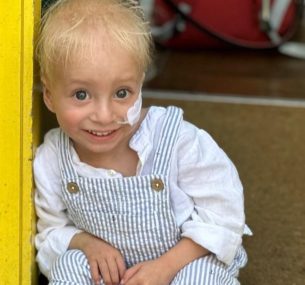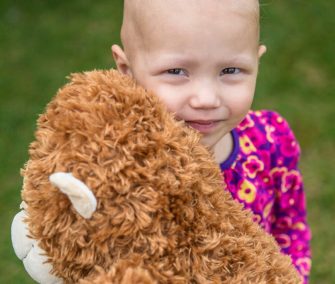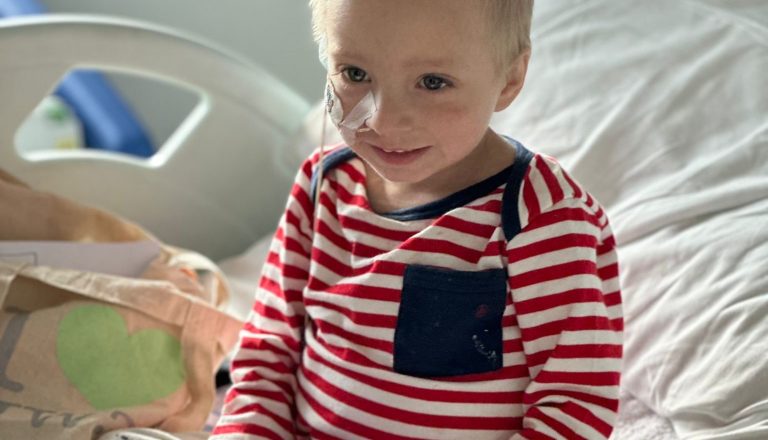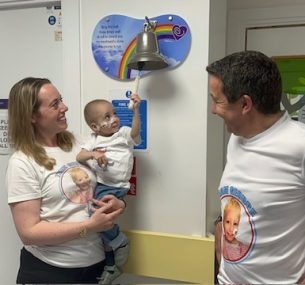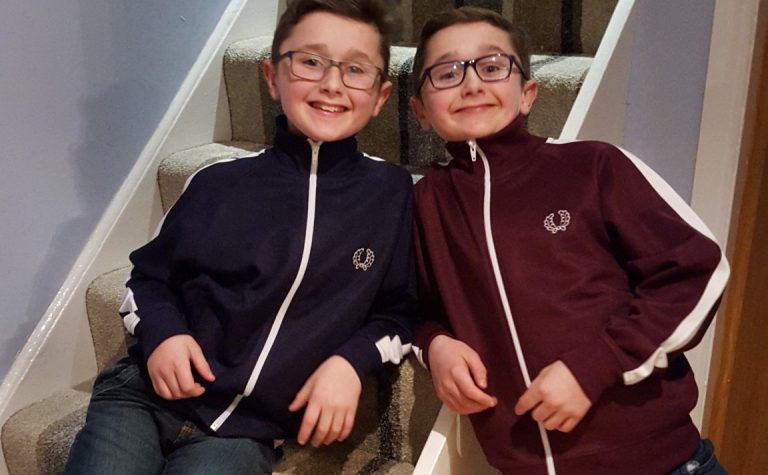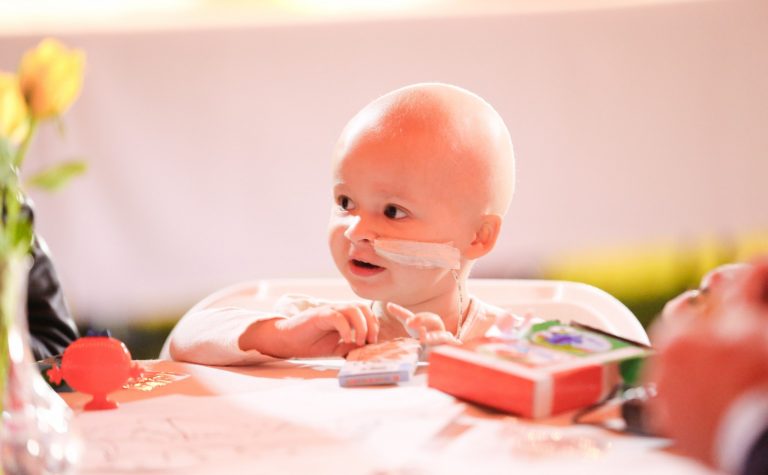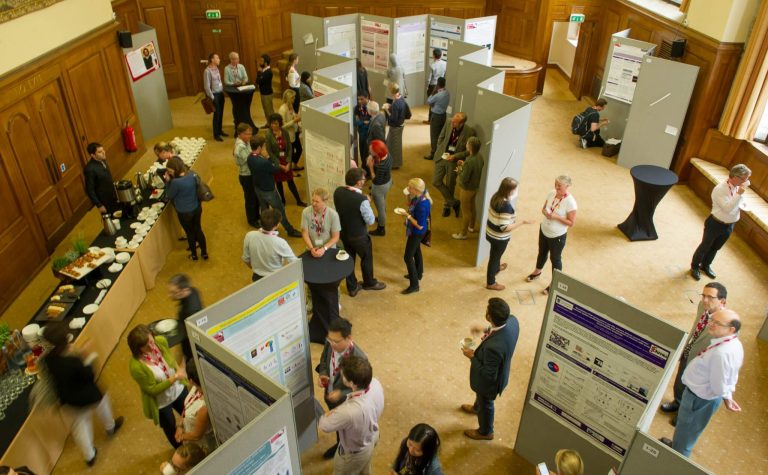Early signs
George had just turned two when he became unwell, two months before the diagnosis of rhabdomyosarcoma. It became apparent he had an obstruction in his liver and bile duct as he became increasingly jaundiced. We were in and out of hospitals and finally, within 48 hours, a biopsy was undertaken. Then, we heard the unthinkable news. I remember the moment with extreme clarity – it felt like my entire world had collapsed.
